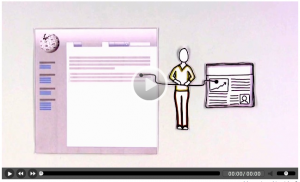It’s been a while since I posted about Cory’s experiences as a newly minted cyber high school student. Truth is, there were some bumps in the highway. Around the end of week two, there was a noticeable drop in commitment. “I think I’ll just work on music today …” was the entry-point for a fierce debate about how work should be prioritized. When does school work end and personal projects begin? Is she taking advantage of the new learning environment, or are mom and dad simply freaking out about the newness? It’s just so different than anything we’ve experienced in traditional schooling …
But we seem to have turned a corner (although I’m sure this won’t be the last tumultuous week of schooling). What has really changed?
I notice an increase in teacher contact. Cory’s learning coach called to give us a progress report (she’s doing great) and we discussed class options for the coming months. This is the first time a teacher has called our home to tell us our daughter is doing well in school – and ask what we think … Are we comfortable? Do we have any questions?
This may sound strange … but I notice an increase in the ability to plan and understand elapsed time. Yes, sounds ridiculous – after all, I’ve insisted on analog clocks in the house since Cory was two and I was appalled at how many kids could no longer tell time. However, although she could look at the clock and tell you the time – it had no meaning. My unscientific hypothesis was that her school day was so regimented, she never had to bother understanding time – someone would always tell her when to come and go. Now that Cory is responsible for getting up and attending her elluminate sessions, it seems she has a sudden ability to understand time. It’s like a muscle that’s finally getting exercise.
I notice an increase in the level of involvement with extracurricular activities – taking more of a leadership role. Maybe it’s a function of finally having time to devote to these projects.
I notice … a more rested child, resulting in an increased enthusiasm for everything!
Notable conversation of the week: I came home yesterday and was greeted by, “I need help with science.” My first response: Did you ask your teacher? No, of course not … “Oh, I forgot that I can ask my teacher for help.” She’s still learning that she now has far more access to teachers than ever before …


![Reblog this post [with Zemanta]](http://img.zemanta.com/reblog_a.png?x-id=4c29c259-231f-4b3a-870c-0f7f86cf212a)
![Reblog this post [with Zemanta]](http://img.zemanta.com/reblog_a.png?x-id=9ccdc3f2-a9c5-4f77-9050-c968ae55f085)
![Reblog this post [with Zemanta]](http://img.zemanta.com/reblog_a.png?x-id=4082ded2-d014-422b-a05b-d031bedea115)



